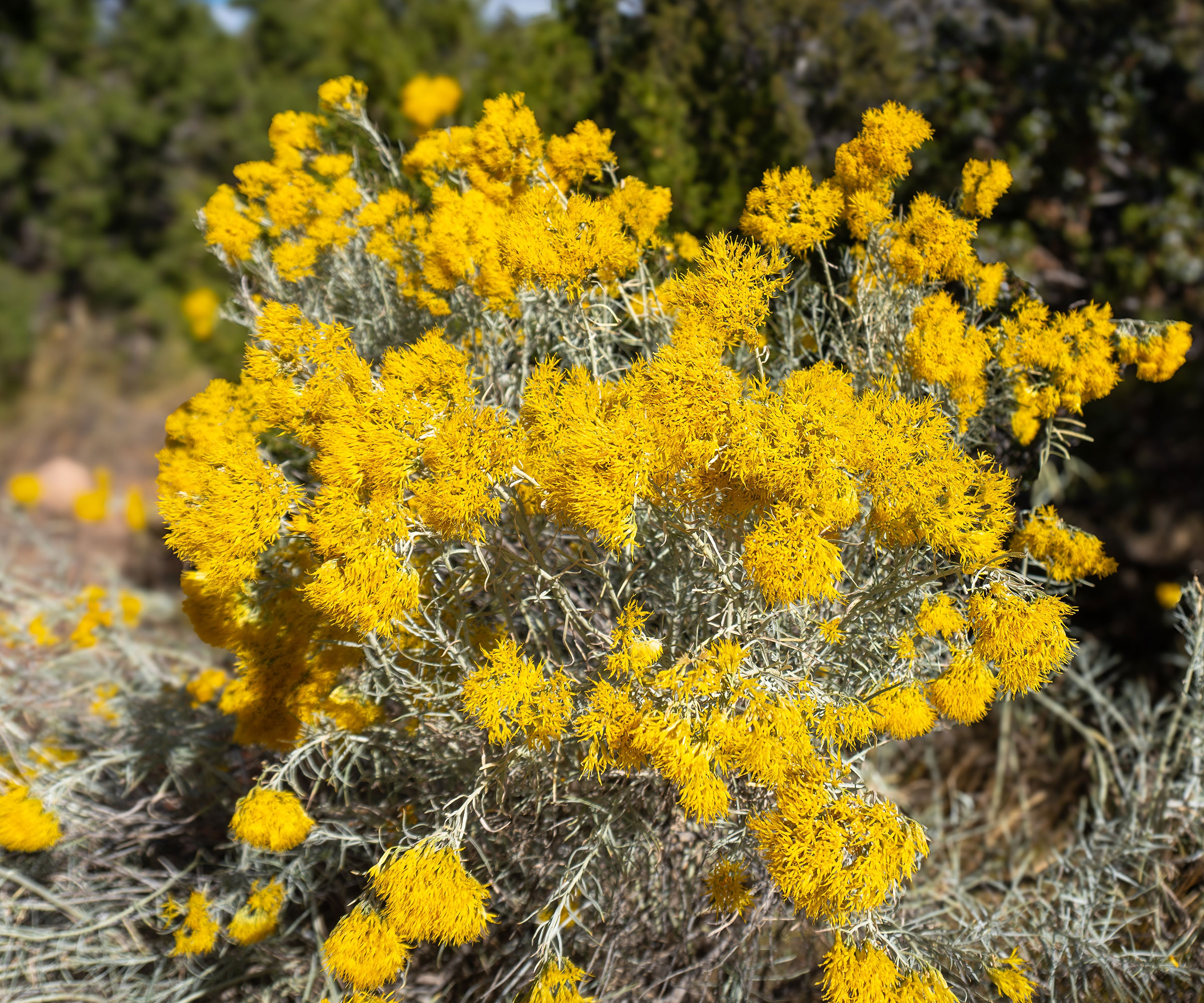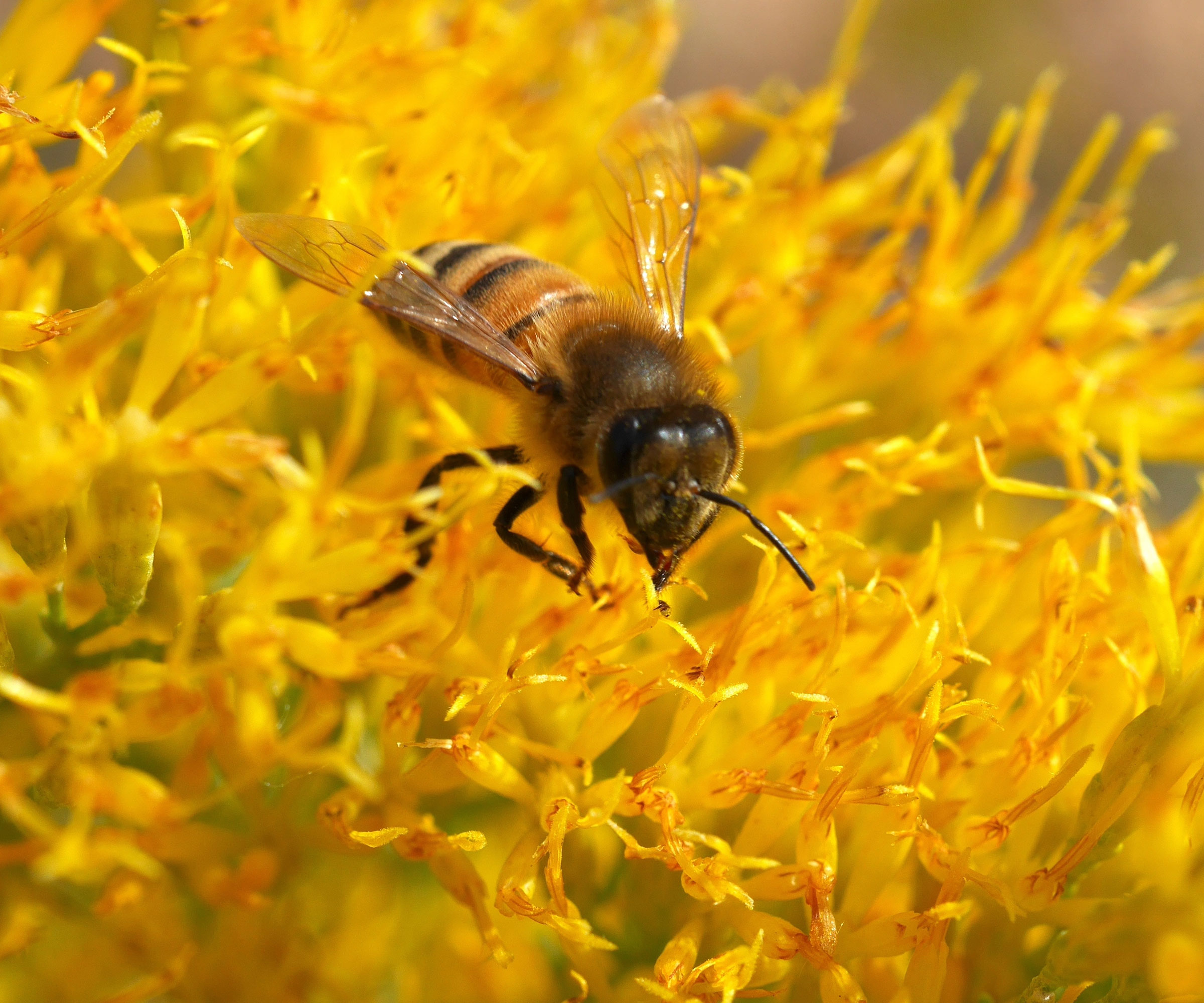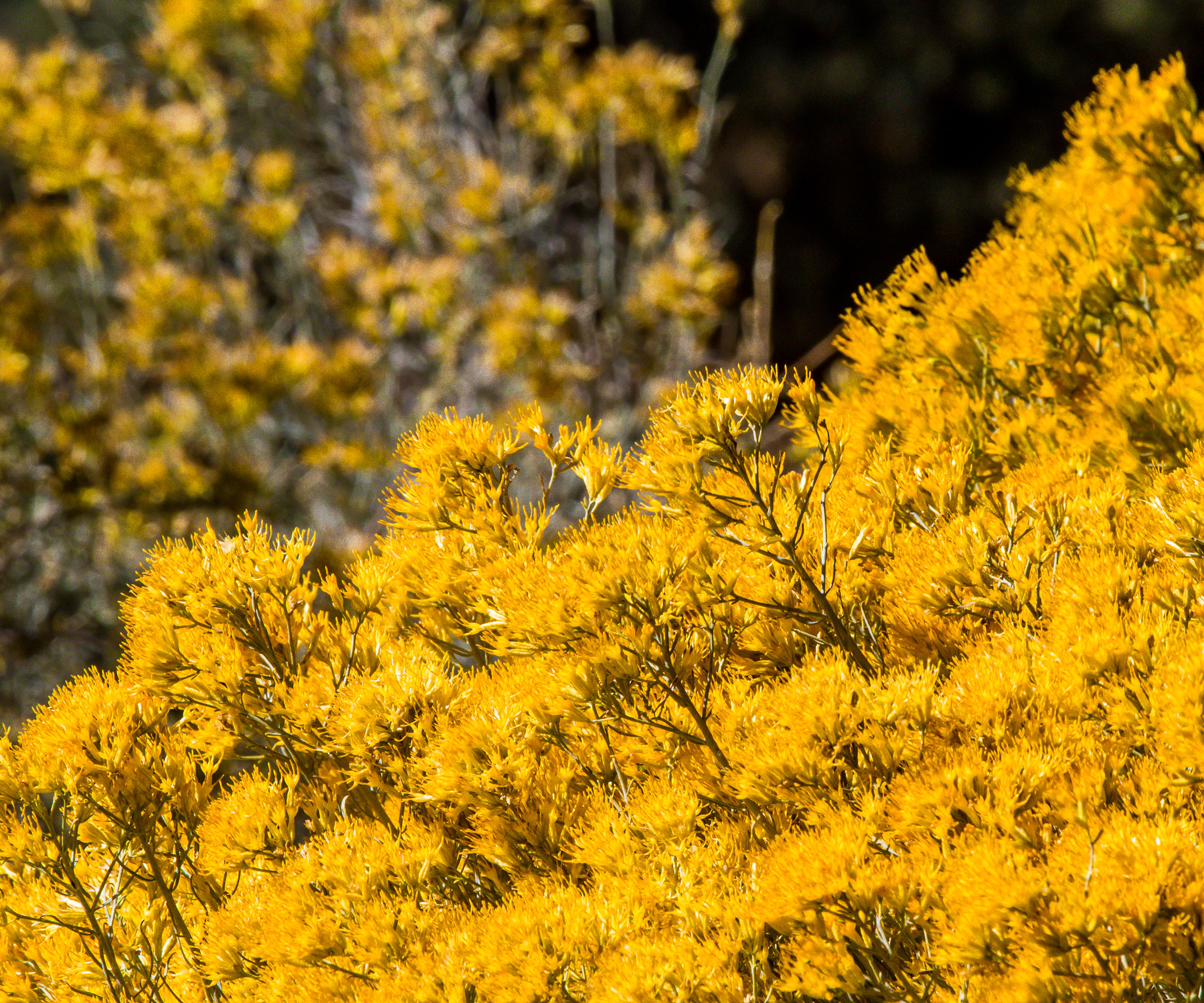Grow Rubber Rabbitbrush For Native Color: Cultivate Pollinator-Friendly Chamisa Shrubs
Hardy chamisa shrubs thrive in tricky arid spots and provide a welcome boost to pollinators – as well as a burst of vibrant yellow. Here’s how to grow rubber rabbitbrush in your yard


Quick Facts
Height: 2-8ft (0.6-2.4m)
Spread: 3-9ft (0.9-2.7m)
Sun exposure: Full sun
Soil: Alkaline, well-draining
Hardiness: USDA zones 4-9
When to plant: Spring, fall
Flowering time: Summer, fall
Over time, rubber rabbitbrush plants have served a number of useful purposes. Also called chamisa plants, Native Americans would once grow rubber rabbitbrush (Ericameria nauseosa) to create yellow dyes. Later, during World War II, this native flowering shrub would be used as a much-needed ingredient in the production of rubber. Today’s modern gardeners continue to praise the species for its exceptional value within the landscape, noting its golden flowers and nourishment for pollinators. Here’s how you can grow this striking low-maintenance perennial shrub.

Caring for Rubber Rabbitbrush
Related to sagebrush, this hardy perennial shrub is often found in places that might deter other plants. It can thrive in poor soils and heat-soaked situations, droughts and windy conditions. This flowering shrub also fares well at high altitudes. Here’s how to grow rubber rabbitbrush plants that will keep your pollinators happy year after year:
- Lighting Conditions: Gray rabbitbrush grows best where it can receive full sun for at least six-eight hours. Though it can be planted into beds that receive some shade throughout the day, excess shade may cause the plants to become leggy or flower poorly.
- Temperature & Humidity: Rabbitbrush plants can tolerate a wide range of temperatures, including those which are especially warm or cool. This, in combination with their preference for low humidity, makes them well-suited for growing at higher elevations.
- Watering Needs: Rubber rabbitbrush is ideal for use in water-wise landscapes. Long, deep roots allow the plants to flourish throughout extended periods of drought. As an ornamental, supplemental irrigation is only seldom needed.
- Fertilizing: Established plants only rarely require feeding. This species, specifically, is known to thrive where soil fertility is poor. If you do choose to fertilize them, do so with care, as this may lead to the rapid spread or overgrowth of rabbitbrush plants.
- Soil & Compost: Rubber rabbitbrush plants perform well across a wide range of soil types. This includes those which are especially sandy, rocky, or composed of heavy clays. Though compost and amendments are rarely necessary, they can be used to improve drainage within beds.

Where and When to Plant Rubber Rabbitbrush
Gray rabbitbrush is native to much of the western United States. Most plants can be found growing under warm, dry conditions across plains and foothills. If you are growing this plant within the landscape, be sure to mimic these conditions in water-wise garden beds, informal wildflower patches, and xeriscaped lawns.
This plant can also be used for erosion control in sunny sloped regions, and also if you want to create wildlife habitat. Though it may be possible to find rabbitbrush plants at specialty retailers, most gardeners will need to grow from seed. Rabbitbrush seed is most frequently sown in fall, as soon as it has matured in the garden, or in spring.
How to Plant Rubber Rabbitbrush
Rabbitbrush seedlings are best moved into the garden in spring after the soil has warmed and all chances of frost have passed. Seeds started indoors should be hardened off before being moved into the garden to avoid injury. Early planting will allow for rapid root development and establishment throughout the first season.
Prepared beds should be free from weeds and drain well. Though mature plants require only a little moisture, new transplants should be watered much more frequently.
Prune and Deadhead Rubber Rabbitbrush
Though rabbitbrush plants won’t require deadheading, they do benefit from annual pruning. This is best done in late winter or very early spring, just before their growth resumes. At this time, each stem can be trimmed back to better maintain the overall size and shape of the plants. More aggressive pruning, back to 12in (30cm), can further help to promote vigor.
Sign up for the Gardening Know How newsletter today and receive a free copy of our e-book "How to Grow Delicious Tomatoes".

Rubber Rabbitbrush Problems, Pests & Diseases
Rubber rabbitbrush plants are only seldom affected by pests or diseases. Issues related to watering mistakes, however, can be a special cause for concern. This includes both under and overwatering of shrubs. Signs of trouble related to watering include wilting, yellowing of foliage, and even dieback. Less common infections include diseases like stem gall, which can be spread by certain insects.
Best Ways to Propagate Rubber Rabbitbrush
Rabbitbrush plants are most commonly propagated by seed. Seed can be sown directly into beds in fall, or sown into trays indoors. A period of cold stratification lasting approximately 120 days will aid in germination. This can be achieved by chilling seeds in a moist zip-seal bag or by leaving the protected trays outdoors through winter. Seeds treated in this manner will have improved rates of germination in spring.
Frequently Asked Questions
Is Rubber Rabbitbrush Poisonous?
Though some parts of rubber rabbitbrush are purported to have been used medicinally by Native Americans, growers should note its toxicity. The plants have also been reported as moderately toxic to livestock and other grazing animals.
Is Rubber Rabbitbrush Invasive?
Under its ideal conditions, rabbitbrush is known to spread quickly. This is likely due to the plant’s prolific production of seed. Though it can multiply, it is not currently listed as an invasive species.

Tonya Barnett has been gardening for 13 years. Flowers are her passion. She has transformed her backyard into a cut flower garden, which she regularly chronicles on her YouTube channel http://www.youtube.com/@tonyawiththeflowers.